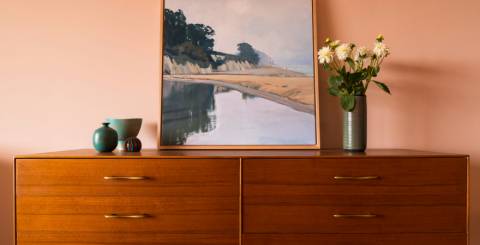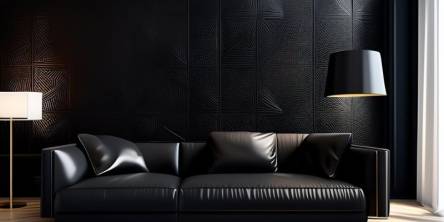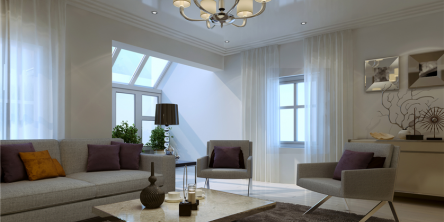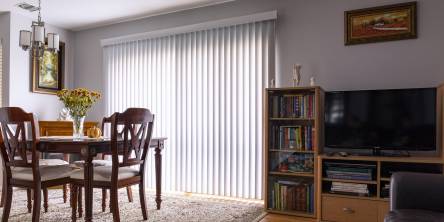How to Paint Veneer Furniture?

Painting veneer furniture, such as walnut veneer, can breathe new life into tired pieces, transforming them into stylish additions to any room. This guide covers essential steps and tips to ensure a smooth, long-lasting finish. Whether you're a DIY enthusiast or a newbie, mastering this skill can save money and enhance your home decor.
Benefits of Veneer Furniture
Veneer furniture offers a mix of durability and aesthetic appeal. It's less prone to warping and splitting compared to solid wood. The production process also makes it eco-friendly by maximizing the use of timber. Veneer pieces are easier to maintain and refurbish, which offers an advantage for long-term use.
Preparing to Paint Veneer Furniture
Cleaning and Sanding
Start by cleaning the veneer surface to remove dirt and grease. Use a mild detergent mixed with water and a soft cloth to wipe down the furniture. For stubborn stains, apply a small amount of mineral spirits. Ensure the surface dries completely before moving to the next step.
Once the surface is clean, sand it lightly to create a good key for the paint. Use fine-grit sandpaper (around 220-grit) to scuff the veneer. Avoid vigorous sanding to prevent damaging the veneer layer. After sanding, wipe the surface with a tack cloth to remove any dust and debris.
Priming the Surface
Apply a high-quality bonding primer to the sanded veneer. This step ensures the paint adheres well and provides a smooth finish. Choose a primer appropriate for the type of paint you plan to use—oil-based or latex. Use a brush or roller to apply an even coat, covering the entire surface.
After priming, let the surface dry as per the primer manufacturer’s instructions. Sand the primed surface lightly with fine-grit sandpaper to smooth out any imperfections. Wipe away the dust with a tack cloth before applying the final coat of paint.
Read more: 10 Furniture and Decor Ideas for Small Living Room
Choosing the Right Paint
Types of Paint Suitable for Veneer
Selecting appropriate paint is crucial for veneer furniture. Latex paint is a popular option due to its durability and ease of use. It provides a smooth finish and cleans up easily with water. Another choice is oil-based paint, known for its strong adhesion and glossy finish. However, it takes longer to dry and requires mineral spirits for cleanup.
Chalk paint is suitable for achieving a matte, rustic look. It adheres well to various surfaces, including veneer, without requiring extensive preparation. Acrylic paint is also an option. It's water-based, quick-drying, and offers a wide range of colors. Shellac-based paint can be used to seal and prime the surface before applying the topcoat, ensuring better adhesion and longevity.
Color Selection Tips
Consider room decor when selecting paint colors. Choose neutral shades for a versatile look that matches most interiors. Whites, grays, and beiges create a timeless appearance. For a bold statement, opt for vibrant colors like red, blue, or green. These colors can act as focal points in the room.
Lighting affects color appearance. Test paint samples on the furniture and observe them under different lighting conditions throughout the day. This helps in understanding how the colors will look in various settings. Match or contrast the furniture color with the existing room palette for a cohesive design.
Additionally, think about the furniture's style and function. Traditional pieces look elegant in classic colors like deep blues or burgundies. Modern furniture benefits from sleek, monochromatic shades. Consider the long-term appeal of the color to ensure it complements the space over time.
Painting Techniques for Veneer Furniture
Applying the First Coat
Selecting the right method for the first coat is critical to ensuring a smooth and durable finish. Start by stirring the paint thoroughly to avoid inconsistencies in color or texture. Use a high-quality synthetic brush or a foam roller to apply the paint evenly. For large, flat surfaces, foam rollers are ideal as they prevent streaks and provide a uniform coat. Brushes work best for intricate areas and edges. Apply a thin, even layer and allow it to dry completely, adhering to the manufacturer's recommended drying time, usually between 4-6 hours for latex paint.
Tips for a Smooth Finish
Achieving a professional-looking finish involves attention to detail and the right techniques.
-
Sand Between Coats: Lightly sand the surface with fine-grit sandpaper (220-320 grit) after the first coat has dried. This removes imperfections and ensures the next layer adheres better.
-
Clean the Surface: Wipe off sanding dust with a tack cloth or a damp rag to maintain a clean surface for the next coat of paint.
-
Second Coat Application: Apply a second thin coat of paint, following the same method used for the first coat. This layer will cover any inconsistencies and improve the color depth.
-
Patience with Drying: Allow sufficient drying time between coats. If paint layers are not fully dry, they can lead to an uneven finish or peeling.
-
Protective Top Coat: For added durability, especially on frequently used furniture, apply a clear polyurethane top coat. This shields the paint from wear and enhances its longevity.
-
Consistency in Technique: Keep your strokes consistent and avoid over-brushing or rolling over partially dried paint. This prevents unwanted texture and marks.
These steps harmonize with the earlier advice on choosing the right paint and preparing the surface, ensuring a cohesive and polished final look.
Caring for Painted Veneer Furniture
Routine Maintenance
Regular cleaning maintains the condition of painted veneer furniture. Use a soft, damp cloth to wipe surfaces, avoiding excessive water which can damage the veneer. Opt for a mild soap solution for stubborn stains, but rinse and dry thoroughly afterward.
Avoiding harsh chemicals prevents damage to the paint finish. Choose furniture-specific cleaners, tested on a small area first, to ensure no adverse reactions.
Dusting frequently minimizes debris accumulation. Use a microfiber cloth to capture dust effectively, which in turn maintains the furniture's appearance and longevity.
Addressing Wear and Tear
Touch-up paint is essential for small scratches or chips. Match the original paint used, applying it with a fine brush to blend seamlessly with the existing finish.
For more significant damage, sanding and repainting may be necessary. Lightly sand the affected area, clean it, and reapply the primer and paint in thin layers for a uniform look.
Protective pads on furniture legs prevent floor scratches and reduce wear over time. Consider repositioning items occasionally to distribute wear evenly, preserving the veneer finish.
Maintaining a stable environment minimizes veneer warping or peeling. Keep furniture away from direct sunlight and regulate humidity to extend the life of the painted finish.
Conclusion
Painting veneer furniture is a cost-effective way to refresh home decor. By understanding the composition and following proper preparation and painting techniques, anyone can achieve professional-looking results. Regular maintenance and protective measures are crucial for preserving the furniture's appearance and longevity. With the right approach, painted veneer furniture can remain a beautiful and functional part of any home for years to come.
Similar Articles
Looking for a bold way to elevate your home or office? Black wallpaper is a game-changer.
Making the decision to remodel a bathroom can be an exciting endeavor. However, oftentimes, people fail to realize just how challenging it can be.
Want stylish lighting? Find the perfect neon signs for room decor and turn your home into a vibrant, stylish haven with glowing accents. Get inspired today!
Ready to enhance your decor with a neon retro sign? Don't forget to check out how this vibrant decor piece can create the perfect atmosphere in any room.
Plastic chairs are a top choice for cafes, offering durability, easy maintenance, and cost-effectiveness. Enhance style, comfort, and functionality effortlessly!
At all times, people try to see the beauty around them, to surround themselves with it. The Art Deco style is translated from French as "decorative art" and is associated with luxurious interiors. The European art movement of the twenties is currently experiencing a revival and is very popular worldwide.
Learn how to choose the perfect custom vertical blinds for your space by considering material, light control, décor style, and functionality in this comprehensive guide.
Learn the best practices for choosing window coverings for every room, balancing style, privacy, lighting, and insulation. Improve your home's comfort and aesthetics.
In today's world, our homes have become more than just a place to live. They are now sanctuaries for relaxation, wellness, and a retreat from the fast-paced outside world. Crafting a healthy home interior is about more than just aesthetics; it's about creating an environment that supports both physical and emotional well-being









